您当前的位置:检测资讯 > 科研开发
嘉峪检测网 2022-05-26 14:01
前言导读
结构性心脏病是近年心血管疾病领域提出的一个新概念,2005年由德国法兰克福的Horst Sievert医生首先提出,泛指一大类先天性或获得性的以心脏和大血管结构异常为主要表现的心血管疾病,如传统定义的先天性心脏病、心脏瓣膜疾病和心肌病等。
广义的结构性心脏病是指除原发心电疾患(因某些电生理异常而发生的VT/VF)和循环疾病(部分高血压、稳定性心绞痛、ACS)以外,任何心脏结构的异常,任何与心脏和大血管结构有关的疾病。而狭义的结构性心脏病是指解剖异常引起的心脏结构改变所造成的心脏的病理生理变化。包括:(1)先天性心脏病:室间隔缺损(VSD)、房间隔缺损(ASD)、动脉导管未闭(PDA)等;(2)瓣膜病:二尖瓣、三尖瓣、主动脉瓣、肺动脉瓣等;(3)心肌病:肥厚性心肌病、扩张型心肌病、致心律失常型右室心肌病等;(4)心肌梗塞后室间隔穿孔、室壁瘤、疤痕心肌等。
在过去十年中,结构性心脏病的诊断及治疗取得了飞速发展,成为了当今心血管疾病领域的一大亮点,其未来发展引人瞩目。
根据弗若斯特沙利文的资料显示,被广泛视为针对瓣膜性心脏病高度有效疗法的介入式瓣膜手术在中国仍然供不应求,用于该等手术的经导管心脏瓣膜器械亦然。此问题影响了大量未能得到妥善治疗的病患,也为合格并致力于改变现状的医疗器械从业者带来了可观的商业机遇。
心脏瓣膜介入器械市场概览
瓣膜性心脏病的特点为四个心脏瓣膜(即主动脉瓣、二尖瓣、三尖瓣及肺动脉瓣)中一个或多个瓣膜出现损伤或缺陷。在这几个瓣膜中,主动脉瓣控制心脏和主动脉之间的血液流动,从而控制通往身体其他部位的血管;二尖瓣和三尖瓣控制心房和心室之间的血液流动;而肺动脉瓣控制从心脏到肺的血液流动。正常运作的瓣膜可确保适当的血液流动,但瓣膜性心脏病会导致瓣膜变得太窄及硬化(狭窄)而无法完全开启,或无法完全闭合(反流)。下图显示了不同类型的瓣膜性心脏病。
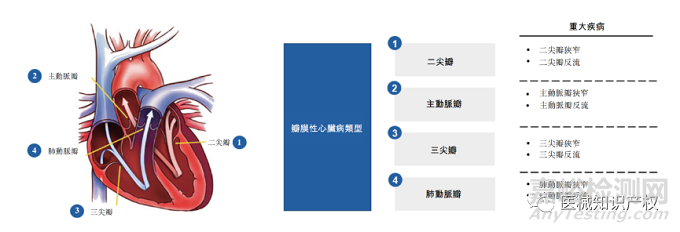
在治疗方案选择方面,对于轻度和中度患者,一般疾病早期通过药物治疗延缓疾病的进展。对于重度患者则需要通过手术干预,因为瓣膜性心脏病是一个机械性病症,相当于心脏这个“泵”的“阀门”坏了,仅通过药物治疗效果有限。
主动脉瓣
主动脉瓣疾病是相对严重的瓣膜病之一,如果患者出现症状后不及时干预,中期生存期较短。经导管主动脉瓣膜置换术(Transcatheter aortic valve replacement ,TAVR)是针对主动脉瓣疾病(尤其是主动脉瓣狭窄)的主要治疗方法。TAVR手术作为一种介入治疗技术,不需要开胸,主要是经过股动脉穿刺,然后通过导管将特制的人工瓣膜送到原有心脏瓣膜的位置,通过球囊扩张释放后,即刻发挥作用。使用TAVR介入手术植入瓣膜的最大优势是患者身体接受度高,不需要开胸,从而降低了对病人的整体伤害。其次,介入手术可以在不影响心脏跳动的情况下操作,将人工瓣膜从病人的股动脉血管植入到病变的位置。
对于手术数量和渗透率,根据著名分析机构的相关分析,我国TAVR手术的数量从2017年的200台增加至2020年的3,600台,复合年增长率为173.9%,且预计将从2020年的3,600台增加至2025年的42,000台及2030年的109,400台,2020年至2025年的复合年增长率为63.3%且2025年至2030年的复合年增长率为21.1%。我国TAVR手术的渗透率由2017年的0.0%增长至2020年的0.5%,并预计将进一步增长至2025年的4.5%及2030年的10.2%。下表显示我国TAVR手术的数量及渗透率。
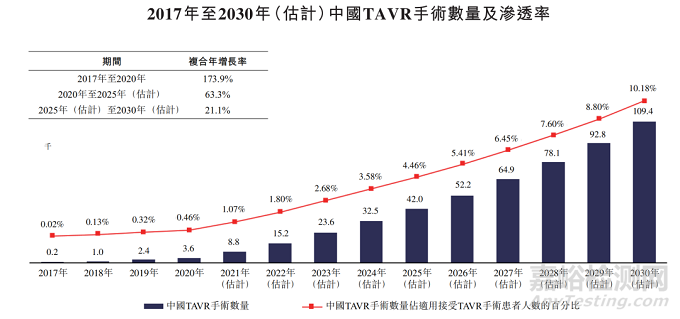
对于产品市场,根据著名分析机构的相关分析,我国TAVR市场于2020年达到人民币555.8百万元,2017年至2020年的复合年增长率为138.0%,TAVR市场预计将于2025年增至人民币5,055.7百万元,于2030年增至人民币11,490.5百万元,2020年至2025年的复合年增长率为55.5%,而2025年至2030年的复合年增长率为17.8%。下表显示我国的过往及预测TAVR产品市场:
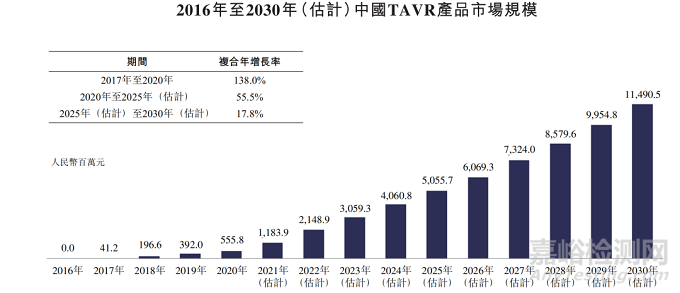
TAVR 具备巨大的临床价值创造、商业价值实现以及高技术壁垒和长期不可替代性,同时,仍在不断优化迭代技术水平,不断优化其对于主动脉瓣狭窄和反流的治疗效果。可以说,TAVR 是名副其实的长坡厚雪赛道。
二尖瓣
笔者通过查阅,在全球范围内,已有多种已上市的经导管二尖瓣设备获得FDA/CE批准,其中目前只有雅培的MitraClip在中国获得了缘对缘TMVr的批准。
二尖瓣位于左心房和左心室之间的交接处。二尖瓣开放可使来自左心房的血液充盈左心室,左心室收缩时二尖瓣关闭,以使泵出的血液只能流入主动脉,而不会回流至左心房。当二尖瓣未完全闭合时,部份血液会漏回左心房,称为MR。二尖瓣反流是最为常见的结构性心脏病,如果不进行医治,可能导致严重的并发症。
中国的中度至重度二尖瓣反流患病数由2016年的9.8百万人增至2020年的10.8百万人,2016年至2020年的复合年增长率为2.5%。此数字预计将于2025年达到12.1百万人,并于2030年达到13.2百万人,2020年至2025年的复合年增长率为2.3%,2025年至2030年的复合年增长率为1.8%。下表显示中国的过往及预测中度至重度二尖瓣反流患病数:
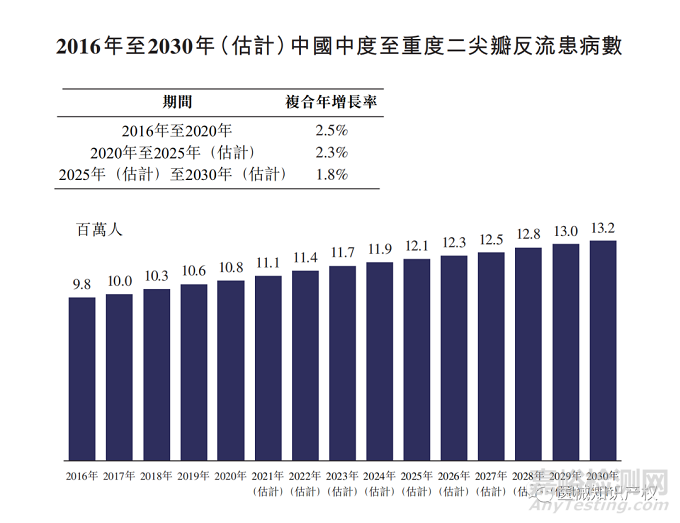
针对二尖瓣反流的手术治疗包括传统开胸(开胸手术)及介入治疗,而介入治疗进一步划分为二尖瓣修复术及二尖瓣置换术。
经导管二尖瓣(TMV)治疗是一种基于导管的技术,通过不涉及开胸手术的介入手术修复或置换二尖瓣。经导管二尖瓣治疗采用与手术治疗相同的原理,适用于无法耐受传统手术的中重度二尖瓣反流患者,经导管二尖瓣(TMV)治疗的主要入路途径包括经心尖及经股入路,两者皆适用于经导管二尖瓣置换术(TMVR)及经导管二尖瓣修复术(TMVr)。
经导管二尖瓣治疗技术汇总如下图所示:
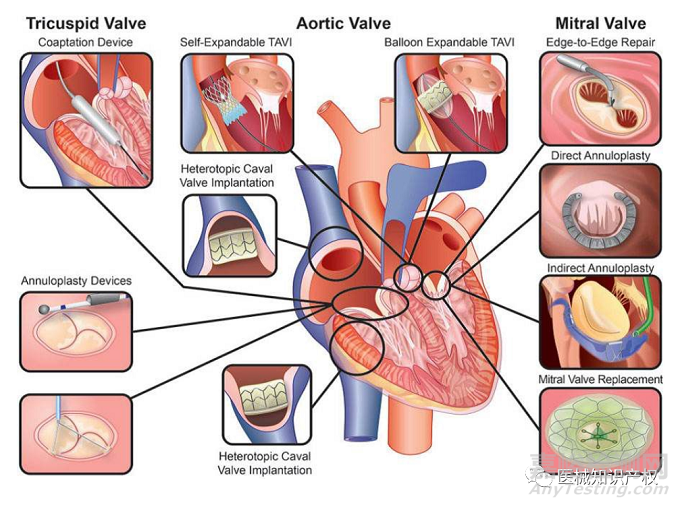
我国TMV介入治疗市场预计将从2021年的人民币52.5百万元增加至2025年的人 民币1,861.2百万元,2021年至2025年的复合年增长率为144.0%,而2030年的TMV介入治疗市场预计将达到人民币7,578.8百万元,2025年至2030年的复合年增长率为32.4%。下表显示我国的过往及预测TMV介入治疗市场规模:
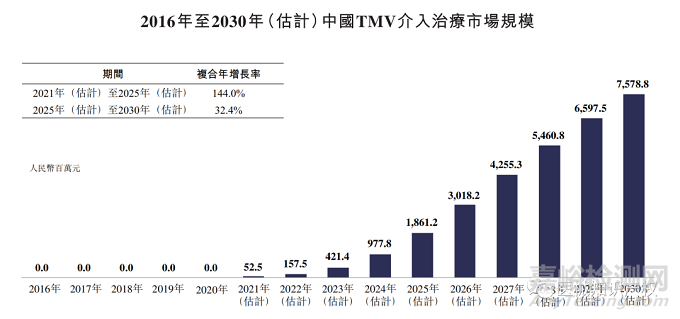
专利分析
在众多的TAVR产品中,作为心脏瓣膜领域的鼻祖和绝对巨头-爱德华的SAPIEN 3备受瞩目,国外医疗巨头产品在中国的上市,也将国内TAVR带入“战国时代";对于二尖瓣而言,笔者通过查阅,在全球范围内,已有多种已上市的经导管二尖瓣设备获得FDA/CE批准,其中只有雅培的MitraClip在中国获得了缘对缘TMVr的批准。因此,本文对爱德华的Sapien 3和雅培的MitraClip进行聚焦,以飨读者。如若获取完整心脏瓣膜医疗器械专利清单与专利分析可以与笔者取得联系,共同交流学习。
爱德华-Sapien 3
从全球TAVR市场范围来看上,比较公认的市场格局为:爱德华占比约60%,美敦力占比约30%,雅培、波士顿科学等占剩余10%份额。目前,爱德华陆续已上市的TAVR产品共有两种——SAPIEN 3、以及SAPIEN 3 Ultra,为标杆级别的器械。2020年6月,爱德华SAPIEN 3在中国获得NMPA批准,成为首款获得中国监管机构批准的国外瓣膜产品。
技术脉络
对于SAPIEN 3技术脉络,笔者通过如下图片向各位读者进行展示:
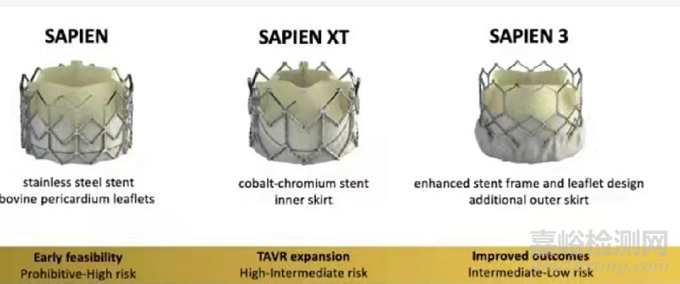
SAPIEN 3技术脉络示意图
技术理解
对于SAPIEN 3技术要点,其主要包括四个主要方面部分,笔者通过如下图片向各位读者进行展示:
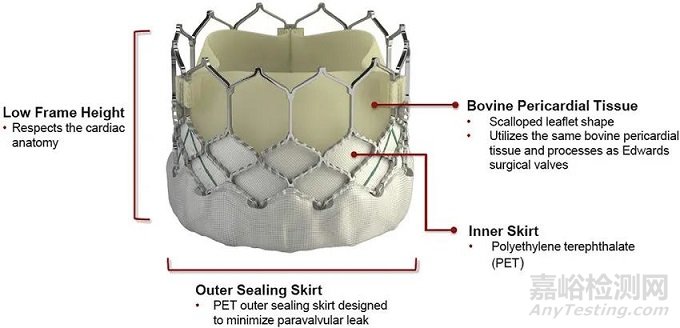
SAPIEN 3技术要点示意图
另外,对于SAPIEN 3技术拆解,其装配关系如下四幅图所示:




SAPIEN 3技术装配示意图
重点专利
根据SAPIEN 3相关重点专利,爱德华对其进行了细致性的专利布局,笔者从涉及的相关专利中分别择机选择了3组专利进行了解析,相关结果如下:需要特别说明的是,如若获取完整专利清单与专利分析情况可以与笔者取得联系,共同交流学习:
1
|
|
|
|
|
|
|
|
||
|
|
|
||
|
|
|
||
|
|
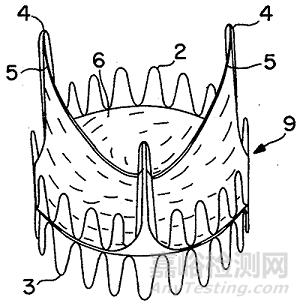 |
||
2
|
|
|
|
|
|
|
|
||
|
|
|
||
|
|
|
||
|
|
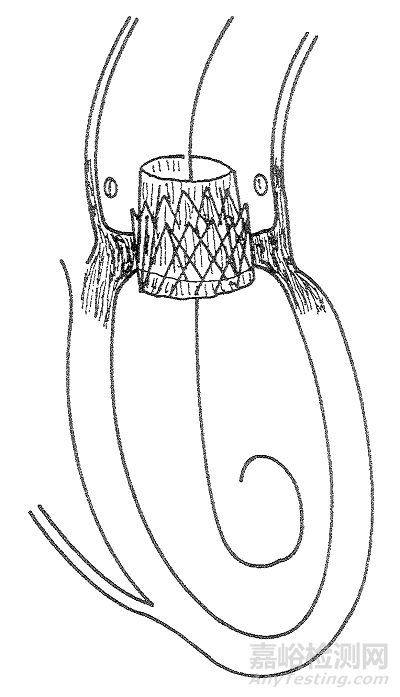 |
||
3
|
|
|
|
|
|
|
|
||
|
|
|
||
|
|
|
||
|
|
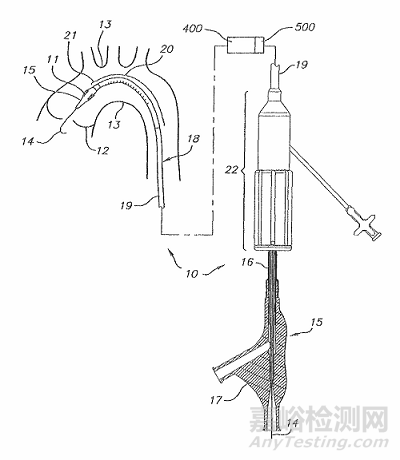 |
||
专利纠纷
需要特别说明的是,作为心脏瓣膜领域的巨头公司,爱德华在知识产权方面高度重视,引领了医疗器械领域最著名的专利纠纷案件:在TAVR领域,美敦力、爱德华生命科学、波士顿科学就产品和市场展开了激烈的专利三国战。爱德华生命科学向美敦力发起专利侵权诉讼,指控美敦力的CoreValve心脏瓣膜产品侵犯其Sapien心脏瓣膜产品的专利技术,经多年诉讼,双方最终和解,美敦力向爱德华生命科学支付超7.5亿美元。波士顿科学和爱德华生命科学之间的专利纠纷也缠斗数年,围绕爱德华生命科学的Sapien 3 及Sapien 3 Ultra心脏瓣膜升级产品,双方相互指控专利侵权,最终达成和解,爱德华生命科学向波士顿科学支付1.8亿美元。
不仅如此,爱德华还就心脏瓣膜相关专利对胜犹达(雅培)、戈尔、库克、CarboMedics、Neovasc等公司展开过专利战,由此可见爱德华对知识产权保护的决心和战斗力。笔者对上述案件均进行过细致的研究汲取,感兴趣的读者可以和笔者取得联系,一起沟通学习。
雅培-MitraClip
MitraClip 的故事始于 1990 年代后期的加利福尼亚,医疗器械公司 Evalve Inc.(MitraClip 原研公司,2009年被雅培收购)的团队希望实现一些新目标——使用基于导管的方法修复跳动心脏中的二尖瓣。
技术理解
MitraClip实物如下所示:
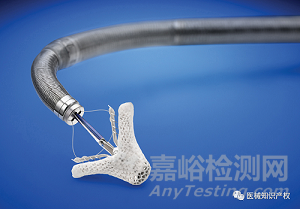
MitraClip工作示意如下所示:
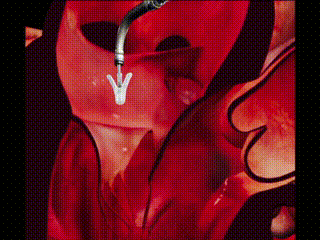
雅培全球领先的MitraClip是一种微创性的经导管二尖瓣返流修补术,为手术高风险的中重度二尖瓣返流患者提供了一种可替代选择的治疗手段,让他们能够进行不开胸、无需体外循环支持、创伤小、手术时间短、安全性高的微创手术。
技术脉络
MitraClip系统相关产品主要组成部分如下图所示:
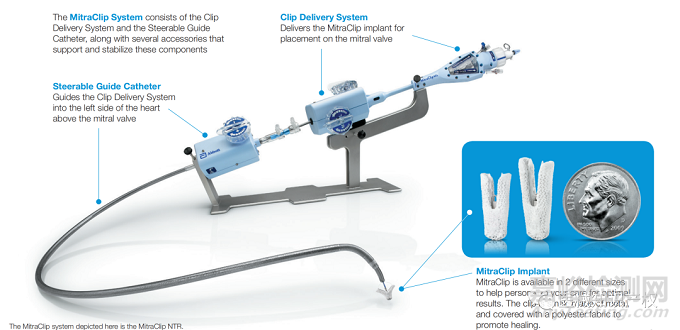
对于MitraClip相关技术,其发展历程重要节点如下图所示:
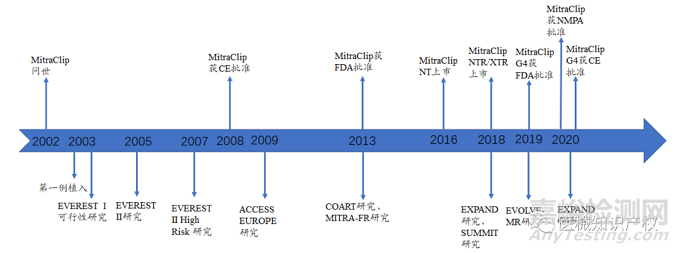
对于MitraClip相关技术,其经历了多次技术迭代,目前来看,其产品技术已经更新至第四代,其技术迭代如下图所示:
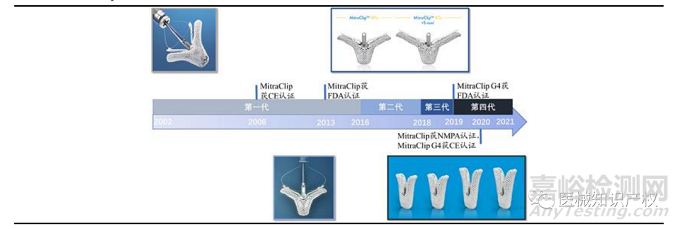
重要专利
对于MitraClip相关专利,笔者对MitraClip进行了系统性梳理和全面性研究,感兴趣的读者可以与笔者取得联系,对梳理和研究内容一起交流学习,这里笔者将MitraClip部分相关重要专利进行罗列:
01
|
公开/公告号 |
US6629534B1 |
申请日 |
2000-04-07 |
|
发明名称 |
Methods and apparatus for cardiac valve repair |
||
|
解决的技术问题 |
it would be desirable to provide alternative and additional methods, devices, and systems for performing the repair of mitral and other cardiac valves, particularly the tricuspid valve which is the other atrioventricular valve. Such methods, devices, and systems should preferably not require open chest access and be capable of being performed endovascularly, i.e., using devices which are advanced to the heart from a point in the patient's vasculature remote from the heart. Still more preferably, the methods, devices, and systems should not require that the heart be bypassed, although the methods, devices, and systems should be useful with patients who are bypassed and/or whose heart may be temporarily stopped by drugs or other techniques. |
||
|
技术方案 |
The methods, devices, and systems are provided for performing endovascular repair of atrioventricular and other cardiac valves in the heart. Regurgitation of an atrioventricular valve, particularly a mitral valve, can be repaired by modifying a tissue structure selected from the valve leaflets, the valve annulus, the valve chordae, and the papillary muscles. These structures may be modified by suturing, stapling, snaring, or shortening, using interventional tools which are introduced to a heart chamber. Preferably, the tissue structures will be temporarily modified prior to permanent modification. For example, opposed valve leaflets may be temporarily grasped and held into position prior to permanent attachment. |
||
|
相关附图 |
|
||
02
|
公开/公告号 |
US7563267B2 |
申请日 |
2003-05-19 |
|
发明名称 |
Fixation device and methods for engaging tissue |
||
|
解决的技术问题 |
it would be desirable to provide alternative and additional methods, devices, and systems for performing the repair of mitral and other cardiac valves. Such methods, devices, and systems should preferably not require open chest access and be capable of being performed either endovascularly, i.e., using devices which are advanced to the heart from a point in the patient's vasculature remote from the heart or by a minimally invasive approach. Further, such devices and systems should provide features which allow repositioning and optional removal of a fixation device prior to fixation to ensure optimal placement. Still more preferably, the methods, devices, and systems would be useful for repair of tissues in the body other than heart valves. |
||
|
技术方案 |
The invention provides devices, systems and methods for tissue approximation and repair at treatment sites. The devices, systems and methods of the invention will find use in a variety of therapeutic procedures, including endovascular, minimally-invasive, and open surgical procedures, and can be used in various anatomical regions, including the abdomen, thorax, cardiovascular system, heart, intestinal tract, stomach, urinary tract, bladder, lung, and other organs, vessels, and tissues. The invention is particularly useful in those procedures requiring minimally-invasive or endovascular access to remote tissue locations, where the instruments utilized must negotiate long, narrow, and tortuous pathways to the treatment site. In addition, many of the devices and systems of the invention are adapted to be reversible and removable from the patient at any point without interference with or trauma to internal tissues. |
||
|
相关附图 |
|
||
03
|
公开/公告号 |
US7666204B2 |
申请日 |
2003-05-19 |
|
发明名称 |
Multi-catheter steerable guiding system and methods of use |
||
|
解决的技术问题 |
it would be desirable to provide an access or guiding system having an adjustable distal end which is capable of being positioned within a target body cavity in a desired orientation. The system should have a large lumen diameter to accommodate the passage of a variety of devices, should have good wall strength to avoid kinking or collapse when bent around tight curves, and should have good column, tensile, and torsional strength to avoid deformation when the devices are passed through the lumen and torqued or translated. The steering mechanisms should provide for a high degree of controlled deflection at the distal end of the system but should not take up significant lumen area to allow for passage of interventional devices. Further, the system should be positionable in a manner which allows compound curves to be formed, for example curvature within more than one plane. |
||
|
技术方案 |
Devices, systems, methods and kits are provided for endoscopically accessing a body cavity and providing a directed pathway toward a target tissue within the cavity. The directed pathway is provided by a multi-catheter guiding system which is positioned in a desired configuration, generally directed toward the target tissue. Interventional devices may then be passed through the guiding system to the target tissue. Depending on the location of the target tissue and the desired angle of approach, the guiding system may be required to maintain one or more curves in one or more planes to properly direct the interventional devices. The multi-catheter guiding system of the present invention comprises an outer guiding catheter and a coaxially positioned inner guiding catheter, each of which independently form curvatures so that together the curves properly direct the interventional device. |
||
|
相关附图 |
|
||
04
|
公开/公告号 |
US7608091B2 |
申请日 |
2003-07-03 |
|
发明名称 |
Methods and apparatus for cardiac valve repair |
||
|
解决的技术问题 |
it would be desirable to provide alternative and additional methods, devices, and systems for performing the repair of mitral and other cardiac valves, particularly the tricuspid valve which is the other atrioventricular valve. Such methods, devices, and systems should preferably not require open chest access and be capable of being performed endovascularly, i.e., using devices which are advanced to the heart from a point in the patient's vasculature remote from the heart. Still more preferably, the methods, devices, and systems should not require that the heart be bypassed, although the methods, devices, and systems should be useful with patients who are bypassed and/or whose heart may be temporarily stopped by drugs or other techniques. |
||
|
技术方案 |
The methods, devices, and systems are provided for performing endovascular repair of atrioventricular and other cardiac valves in the heart. Regurgitation of an atrioventricular valve, particularly a mitral valve, can be repaired by modifying a tissue structure selected from the valve leaflets, the valve annulus, the valve chordae, and the papillary muscles. These structures may be modified by suturing, stapling, snaring, or shortening, using interventional tools which are introduced to a heart chamber. Preferably, the tissue structures will be temporarily modified prior to permanent modification. For example, opposed valve leaflets may be temporarily grasped and held into position prior to permanent attachment. |
||
|
相关附图 |
|
||
05
|
公开/公告号 |
US10828042B2 |
申请日 |
2003-05-19 |
|
发明名称 |
Fixation devices, systems and methods for engaging tissue |
||
|
解决的技术问题 |
it would be desirable to provide alternative and additional methods, devices, and systems for performing the repair of mitral and other cardiac valves. Such methods, devices, and systems should preferably not require open chest access and be capable of being performed either endovascularly, i.e., using devices which are advanced to the heart from a point in the patient's vasculature remote from the heart or by a minimally invasive approach. Further, such devices and systems should provide features which allow repositioning and optional removal of a fixation device prior to fixation to ensure optimal placement. Still more preferably, the methods, devices, and systems would be useful for repair of tissues in the body other than heart valves. |
||
|
技术方案 |
System for fixation of leaflets of a heart valve including a delivery catheter having an elongated shaft, a proximal end portion and a distal end portion configured to be positioned proximate native leaflets of a heart valve from a remote vascular access point, the delivery catheter further includes a rotatable actuator rod having a threaded fastener at a distal end thereof, and a fixation device releasably coupled by a threaded connection to the threaded fastener of the actuator rod. The fixation device includes a first arm moveable between a closed position and an open position, a second arm moveable between a closed position and an open position. The fixation device further includes a first gripping element movable relative to the first arm in the open position, the first gripping element biased toward the first arm to capture a first leaflet of the heart valve therebetween, and a second gripping element movable relative to the second arm in the open position, the second gripping element biased toward the second arm to capture a second leaflet of the heart valve therebetween. The first gripping element and the second gripping element each includes a plurality of barbs extending therefrom, the plurality of barbs of each of the first gripping element and the second gripping element being aligned transversely in at least one row. The fixation device further includes a covering disposed on each of the first gripping element and the second gripping element, wherein the plurality of barbs of the first gripping element and the second gripping element, respectively, protrude through the covering. |
||
|
相关附图 |
|
||
06
|
公开/公告号 |
CN102395331B |
申请日 |
2009-12-15 |
|
发明名称 |
用于可植入的固定设备的分离机构 |
||
|
解决的技术问题 |
希望的是提供用于执行二尖瓣和其他心脏瓣膜修复的替代和额外的方法、设备和系统。优选地,这种方法、设备和系统宜不要求开放的胸部路径,并能够血管内执行或者通过微创方法执行,血管内执行即使用从患者远离心脏的脉管推进到心脏的设备来执行。此外,这些设备和系统应该提供允许在固定之前重新定位和随意移除固定设备的特征,以确保最佳布置。这种设备还应该容易输送和部署。更优选地,该方法、设备和系统将用于修复心脏瓣膜以外的身体组织。 |
||
|
技术方案 |
本发明提供用于组织接近和在治疗部位进行修复的设备、系统和方法。本发明的设备、系统和方法能够应用在各种治疗手术中,包括血管内、微创和开放式外科手术,并且能够用在各种解剖区域,包括腹部、胸腔、心血管系统、心脏、肠道、胃、尿道、膀胱、肺和其他器官、血管和组织。本发明在那些需要到达远处组织位置的微创或者血管内通路的手术特别有用,其中使用的器械必须通过长的、狭窄且弯曲的路径到达治疗部位。另外,本发明的很多设备和系统适于被倒转并从患者的任何位置处移除,而不与内部组织干涉或损伤内部组织。 |
||
|
相关附图 |
|
||
专利纠纷
爱德华(Edwards ) 的二尖瓣器械PASCAL直接竞标雅培(Abbott)的MitraClip,双方在欧洲展开了一场专利大战。雅培在多个欧洲市场提起的诉讼中指控 Edwards 的经导管瓣膜修复系统 Pascal 侵犯了其 MitraClip 的多项专利。
毫无疑问的,这是TMVr领域最受关注的专利侵权诉讼,目前该案已于2020年7月完结,所涉及金额高达数亿美元。
目前,国内不少在研TMVr产品也是竞标MitraClip,随着国产TMVr产品的上市,相关专利问题必须得到高度重视,通过爱德华和雅培之间的专利战,国产TMVr产品必然可以得到较大的专利启发,感兴趣的读者朋友可以与笔者取得联系,一同学习交流。
结 语
诚如领域内人士共同认识的那样,结构性心脏病医疗器械逐渐赢得市场追捧,据不完全统计,目前我国重点结构性心脏病器械正在进行临床试验,全球以及国内各大结构性心脏病领域医疗厂商也必会将雅培、爱德华等大厂作为重要的标杆和对照,联动产学研医生多方力量,不断创新,推动中国结构性心脏病行业更智能化、精准化、微创化的发展,相关知识产权问题也必将会成为各大结构性心脏病厂商的研究重点课题,后续相关产品的的研发和专利事务值得持续关注。
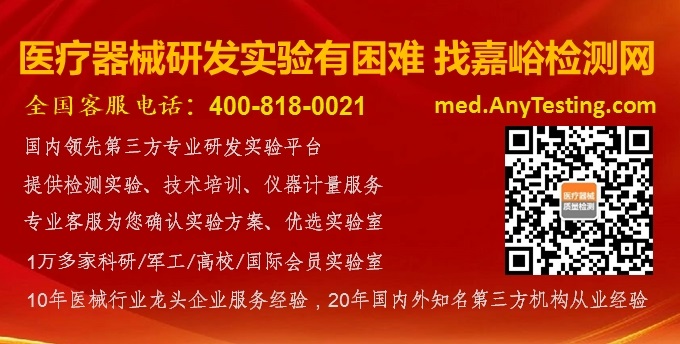
来源:医械知识产权


